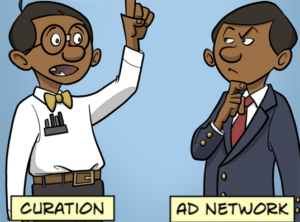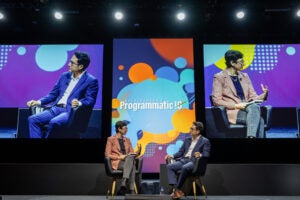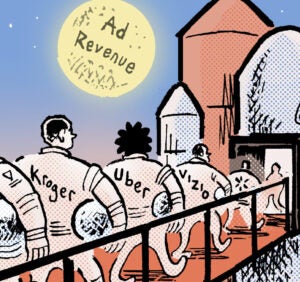“On TV And Video” is a column exploring opportunities and challenges in advanced TV and video.
Today’s column is written by Lance Neuhauser, CEO at 4C.
Nearly a decade of “Game of Thrones” has come and gone without a single interruptive ad.
That alone is noteworthy. But it’s not as though it hasn’t been monetized with ads – it’s just been monetized with ads by players that aren’t HBO.
Look at The Ringer, self-described as “the world’s best website.” The Ringer has wall-to-wall coverage of “Game of Thrones” with front-page articles, countdowns, a dedicated podcast called “Binge Mode” and a Twitter show called “Talk the Thrones.” This community content is ad-supported and highly lucrative.
For shows like “Game of Thrones,” much of the monetization opportunity is in the discussion and community generated by the show, rather than in interrupting the content. Such premium content, and the viewing habits around it, are not conducive to interruptive ads. This is an instructive example for digital-first properties moving into the content game – and for TV players making the push into digital.
TV incumbents have real advantages: They’ve got premium content, brand safety and generations of institutional muscle memory for creating hits.
They’re also at a disadvantage: The way they monetize is traditionally through interruptive units or subscriptions. Interruptions run against what consumers are becoming conditioned to expect from premium content experiences. After each ad, the likelihood of someone maintaining that intense, attentive focus diminishes, which actually takes away from the value of the content that required so much money to create. And there is a ceiling to how much money an addressable audience for premium content can shell out for a recurring subscription just to view the one property.
What The Ringer shows is that there is, for a marquee content property, a way to monetize digital experiences that offsets the need to insert more ads into the programming. If the next generation of vertically integrated content players can capture that activity, they can create an upward spiral of value from the programming, thus creating more likelihood that people are actually going to want to engage in conversation about that programming in other forms, thus creating more opportunities to monetize it.
The trouble is that, at the moment, the community conversations are largely being monetized by social platforms and websites beyond the reach of the content creators. But the social platforms are not far away from producing a scaled hit like “Game of Thrones” and housing both the content and related community under one roof.
What people don’t realize is that Facebook’s infrastructure allows engineers to market-test content at a level that networks can only dream of. Facebook’s initial forays into programming have been experimental in nature, designed to help the deep-pocketed company learn what works and what does not, where the drop-off points are in the programming, what ads actually resonated, and what affinities are associated with the content. Even without anything resembling a hit, it is already realizing a return on investment in the form of priceless learnings that will guide content investments moving forward.
Facebook, Snap and Twitter will get their hits eventually. What we have learned from Netflix, Hulu, HBO, AMC, Showtime and Amazon is that it only takes one or two major programs for people to start seeking more long-form quality premium content. It was “The Sopranos” and “Sex and the City” for HBO. It was “House of Cards” for Netflix, “The Handmaid’s Tale” for Hulu and “Transparent” for Amazon.
It’s a safe bet that the data engine powering Facebook and YouTube will eventually lead to one to two programs that resonate and command our collective attention in the way “The Sopranos” once did for HBO.
The difference then is that the platforms already maintain the infrastructure for hosting and monetizing the interest in this content beyond the walls of the content itself. And that is a distinct advantage that traditional content providers can’t acquire with investment alone.
Follow Lance Neuhauser (@LanceNeuhauser), 4C (@4Cinsights) and AdExchanger (@adexchanger) on Twitter.












